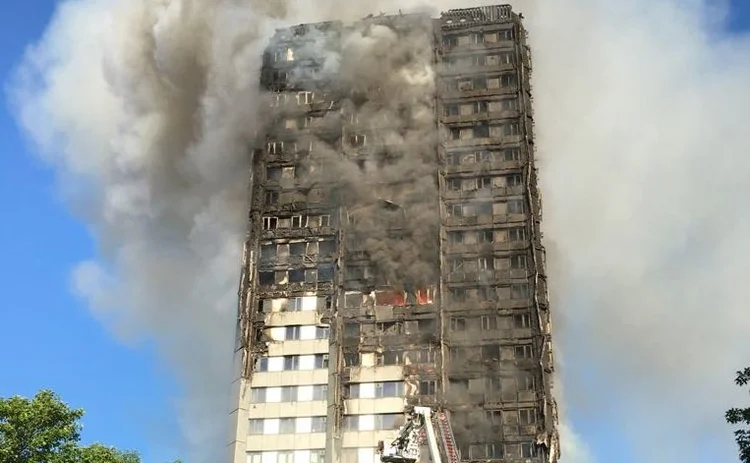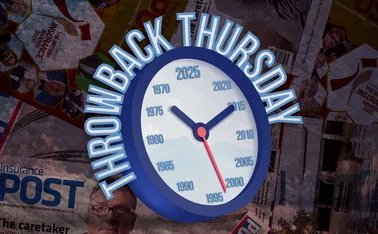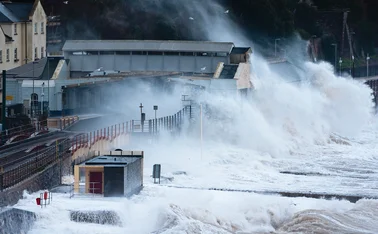
Analysis: The legacy of Grenfell Tower

Need to know
- Insurers are re-examining their property portfolios following the Grenfell Tower fire
- Contractors and fridge manufacturers could face claims
- Litigation is likely to last ‘at least five years’
How the blaze that killed at least 80 people promises to be one of the most complex claims in recent years
It has been over a month since fire swept up the 24-storey Grenfell Tower building in west London, killing around 80 people and devastating the lives of the 225 survivors.
The tragedy sent shock waves through the country, not least in the insurance sector. Protector Forsikring, the carrier behind property owner Kensington and Chelsea borough council, said it is expecting claims of £50m from the fire.
The incident has caused many insurers to re-examine their own property portfolios, particularly in light of flame-resistance tests of cladding on other high-rise buildings across the country.
The Department for Communities and Local Government said 243 buildings in 57 local authorities had failed combustibility tests.
These comprise 235 high-rise residential buildings, one combined school and residential building, another school and six buildings at five NHS trusts.
“Everyone gets lulled into a false sense that somehow UK property is completely bulletproof,” said Peter Blanc, CEO at broker Aston Scott. “When things like this happen, it can remind you that things can go wrong quite badly.”
Black swan
The UK’s largest public sector insurer, Zurich Municipal, said it had been in contact with customers with property portfolios. “We have spoken to many customers with property portfolios, answering their queries and re-communicating relevant current guidance.
“We’re recommending that anyone with a property portfolio makes sure they are fully aware of the construction materials used in their buildings so that they can act quickly should any guidance or regulations be updated.”
Sverre Bjerkeli, CEO of Protector Forsikring, said the company would look at its current property portfolio exposure and its pricing model. However, the immediate concern was over safety of residents of other buildings, he added.
“The issue with potential combustible cladding in high-rise buildings is not a matter of pricing of insurance policies,” he said. “This concerns the risk of life.
“With the current, high-level focus on this issue, Protector will follow the investigation closely and assume that our clients and other professional property owners and managers, take necessary actions to prevent similar events.
“At the same time, we will, of course, also take necessary risk management actions towards our clients in the UK and consider possible price implications.”
The issue of pricing is particularly salient for Protector, which is aiming to take business from the duopoly of public sector insurers, by offering rates at one-third of the premium of Zurich Municipal and RMP.
Protector’s cost margins are narrowed even further with a heavy reliance on reinsurance. The company said that the majority of projected £50m claims will be borne by reinsurance provider Munich Re.
The company’s exposure was likely to be just £2.5m from the fire, the firm said in its half-year results.
Bjerkeli said the unique nature of the fire was unlikely to affect reinsurance rates significantly. “Reinsurers are looking upon this situation as a very special situation, a claim that stands out from the last few decades,” he said. “It could happen in other areas, so it’s a black swan event.
“I don’t expect significant changes in the reinsurance going forward.”
Multiplicity of claims
Protector appointed Cunningham Lindsey as loss adjuster for the building. However, the official investigation into the cause of the fire could frustrate the process of forensic investigation. Cunningham Lindsey was approached but declined to comment.
Talking pont
£50m
The estimated cost of claims which Protector Forsikring expects from Grenfell Tower
£2.5m
Protector’s own exposure, with the remainder borne by reinsurance
£15,000
The average cost of fire claims in 2016, up from £5550 in 2006
£5m
The liability cover limit for Grenfell cladding subcontractor Harley Facades
243
The number of buildings in 57 local authorities that have failed combustibility tests
“It’s a crime scene at the moment, there’s a very detailed investigation into the cause, and the search continues for human remains,” said one loss adjuster source. “It could take months before the site is released by authorities.”
They added the fire could result in one of the most complex claims in the UK in recent years. Not only will there be first party claims for the properties and contents, but also from owners of surrounding buildings damaged by falling debris or smoke, as well as business interruption claims stemming from denial of access.
There will also be liability claims from those who were injured or from the estates of those who died.
“There will be a multiplicity of parties involved here,” the source said. “First there will be the building owners that will be in the frame. Just the fact there has been a fire in the building doesn’t create a liability for them. There has to be a degree of responsibility that will arise in law, with principles like negligence.
“There will then be a whole tier of other parties related to the cause or the spread of the fire. The product liability insurers will be involved if the fire started within an appliance. There’s a potential claim against the manufacturers of that, and potentially the importers and retailers.
“There will be scrutiny cast on the design of the work, surveyors, architects, engineers, contractors, possibly sub-contractors, the cladding, and the companies involved in that.
“You can see how one claim can easily turn into 15.”
Contractors
In the process of testing other buildings for flammable cladding, Camden Council found aluminium panels with a polyethelene core were added to buildings in the Chalcots Estate, and “were not to the standard” it wanted.
The council began the process of removing the cladding and said it was seeking “urgent legal advice” in relation to claims against the contractor Rydon, which was also responsible for refurbishment Grenfell Tower.
The cladding on both Grenfell and the Chalcots Estate was installed by subcontractor Harley Facades, on behalf of Rydon.
Harley’s managing director, Ray Bailey, told ITV News: “These works were as described in the contractual specification and approved in the usual process for construction and building control by the London Borough of Camden. There is no evidence to suggest that this product and cladding system installed in Camden is unsafe.”
According to insurance policy documents on the company’s website, Allianz and Dual respectively provide product liability and professional indemnity to Harley Facades.
Joint public and product liability policy, in particular, provides up to £5m of cover for any one occurrence.
A spokesperson for Allianz said: “This is a complex incident and it is important to remember that at this stage, cause and responsibility have not been determined. It’s important to let the public inquiry run its course and establish the facts before commenting further.”
Fridge fire
The police stated the fire started in a fridge freezer manufactured by Whirlpool. The spread of the fire was believed to be due to other factors, like cladding on the side of the building.
Whirlpool has urged owners of the model, Hotpoint FF175BP, to contact its customer service helpline. However, it has stopped short of issuing a product recall.
“We are working with the authorities to obtain access to the appliance [from Grenfell] so that we can assist with the ongoing investigations,” a Whirlpool spokesperson said.
“Under these circumstances, we are unable to speculate on further details at this time. We are addressing this as a matter of utmost urgency and assisting the authorities in any way we can. We will provide additional updates as our investigations progress.”
The loss adjuster source said appointed investigators of all implicated parties would need to cooperate in carrying out an on-site investigation for the purposes of determining liability.
“You can only do a forensic investigation once, because you might destroy some of the evidence in the process of doing it,” they said.
“You wouldn’t do that until every party you think is going to be involved is present. Then you’d do it together. Then you don’t have a situation where, a year down the line, the insurer of the fridge-freezer challenges the findings.”
According to a recent annual report, Whirlpool does have liability insurance, but it may be forced to bear the costs from a major fault.
“We do maintain product liability insurance, but this insurance may not be adequate to cover losses related to product liability claims brought against us,” the report said.
“We may also be involved in certain class action and other litigation, for which no insurance is available. Product liability insurance could become more expensive and difficult to maintain and may not be available on commercially reasonable terms, if at all. In addition, we do not maintain any product recall insurance. Therefore, any product recall we are required to initiate could have a significant impact on our operating results and/or cash flows.”
Litigation
There is a lot at stake from the investigations. Detective superintendent Fiona McCormack, who is overseeing the public investigation for the Metropolitan Police, said there could be criminal charges as a result.
She said: “We are looking at every criminal offence from manslaughter onwards, we are looking at every health and safety and fire safety offences and we are reviewing every company at the moment involved in the building and refurbishment of Grenfell Tower.”
A claims source said while the findings of appointed loss adjusters would be informed by the public investigation, an on-site investigation would still be required in order to corroborate or refute the official apportionment of blame.
“I would be surprised if this didn’t result in litigation,” they said. “That could take many years to resolve. Realistically it could be up to five years before there’s resolution in terms of apportionment of final liability.”
Safety
In a consultation response to the government’s housing white paper, submitted in May, the Association of British Insurers warned that cheap, flammable cladding had the potential to increase the intensity of a fire.
The response said the average cost of a fire claim has increased from £5550 in 2006, to nearly £15,000 in 2016. However, the number of fire claims has decreased from 71,000 in 2006 to 26,000 a decade later.
The ABI added: “Introducing large quantities of combustible materials into building designs alters both the probability of fire and potential scale of loss.”
The response also included a recommendation that the government review current building regulations.
Steve Parker, managing director of Policy Fast, said he had contacted four or five property underwriters to check if there were any additional policy wordings over the use of certain types of cladding in buildings. So far, he hasn’t heard anything back.
“We certainly haven’t seen any additional requirements over things like construction,” said Parker.
“A building should conform to government safety regulations, but that’s a wide remit. We certainly haven’t yet received any requests from underwriters to tighten up on that.”
Only users who have a paid subscription or are part of a corporate subscription are able to print or copy content.
To access these options, along with all other subscription benefits, please contact info@postonline.co.uk or view our subscription options here: https://subscriptions.postonline.co.uk/subscribe
You are currently unable to print this content. Please contact info@postonline.co.uk to find out more.
You are currently unable to copy this content. Please contact info@postonline.co.uk to find out more.
Copyright Infopro Digital Limited. All rights reserved.
As outlined in our terms and conditions, https://www.infopro-digital.com/terms-and-conditions/subscriptions/ (point 2.4), printing is limited to a single copy.
If you would like to purchase additional rights please email info@postonline.co.uk
Copyright Infopro Digital Limited. All rights reserved.
You may share this content using our article tools. As outlined in our terms and conditions, https://www.infopro-digital.com/terms-and-conditions/subscriptions/ (clause 2.4), an Authorised User may only make one copy of the materials for their own personal use. You must also comply with the restrictions in clause 2.5.
If you would like to purchase additional rights please email info@postonline.co.uk








